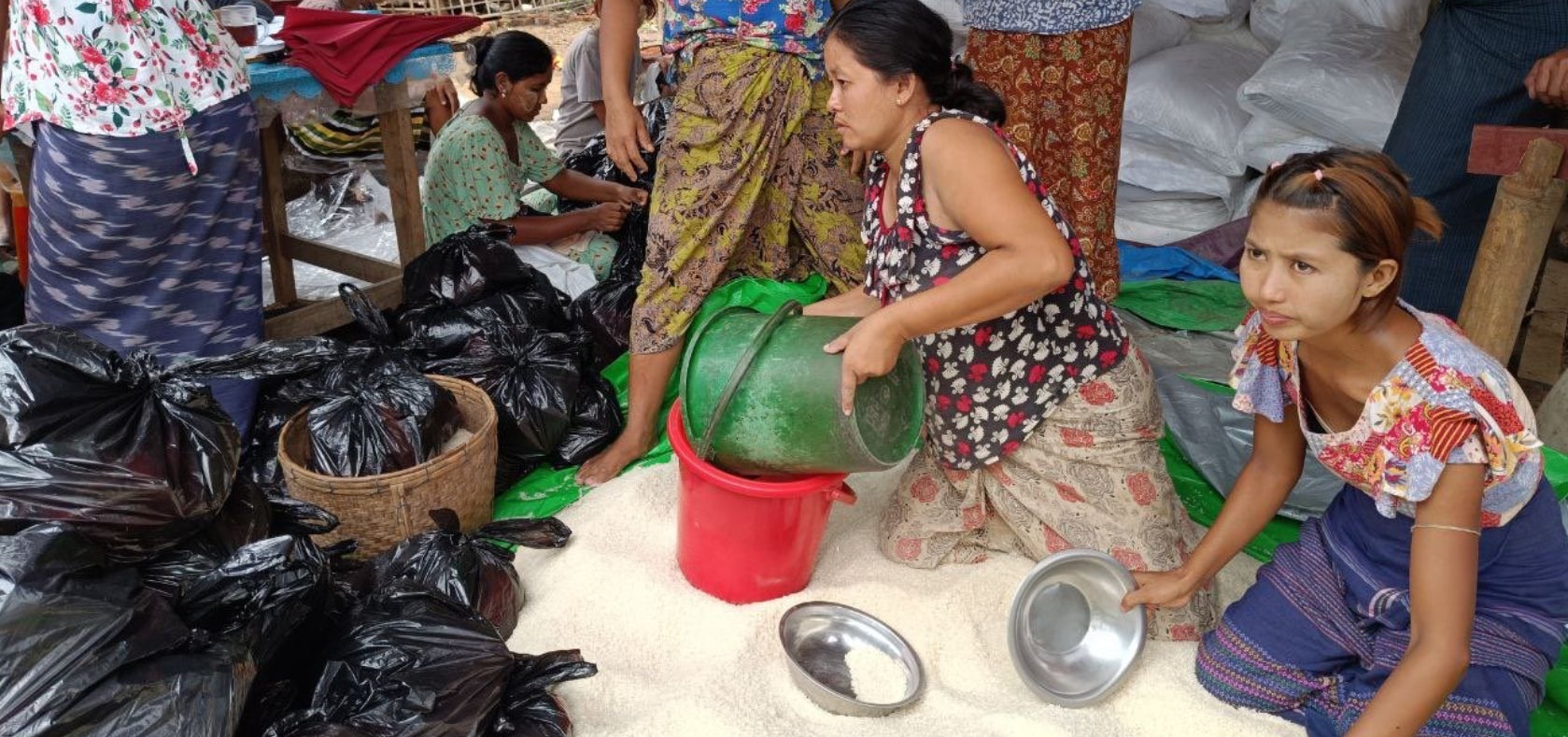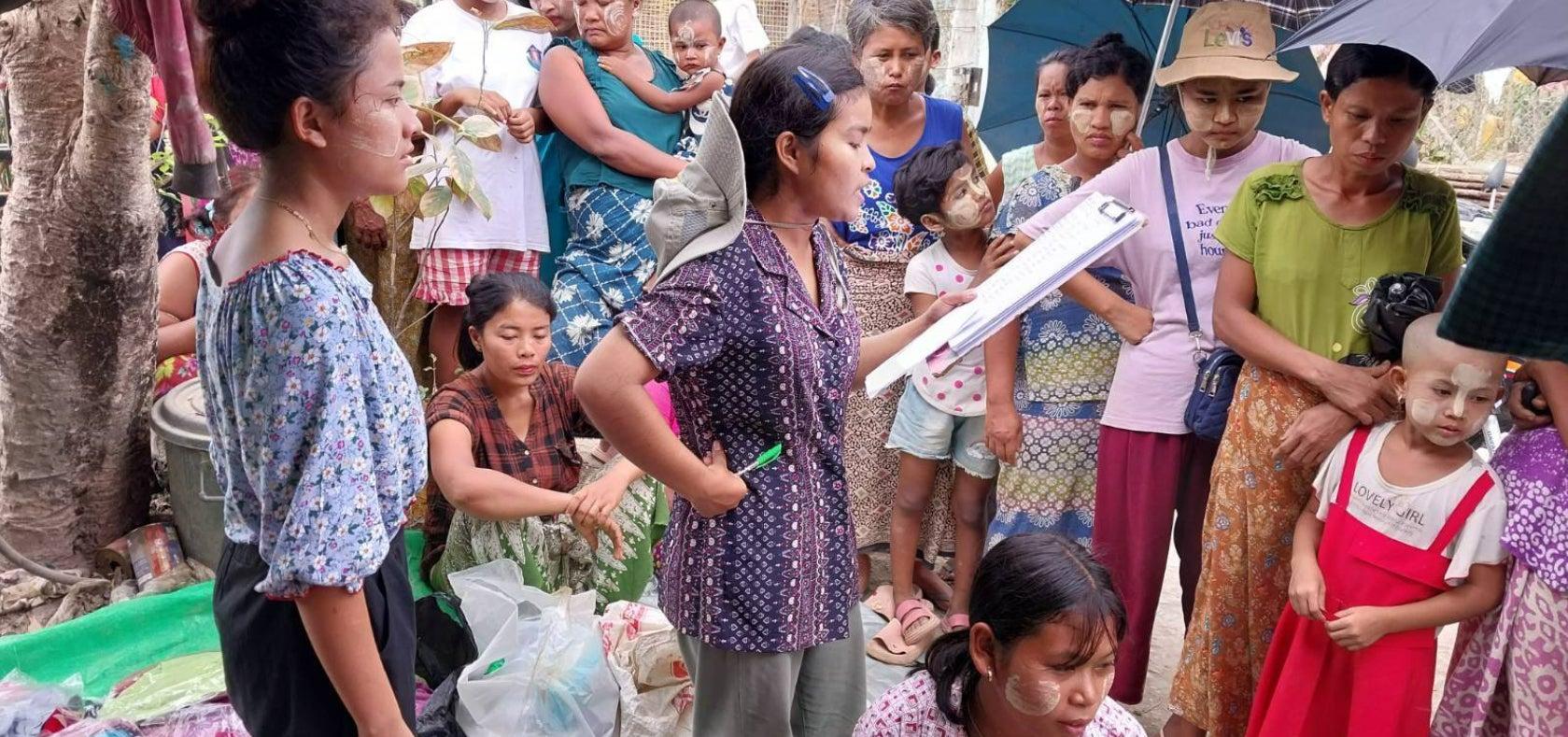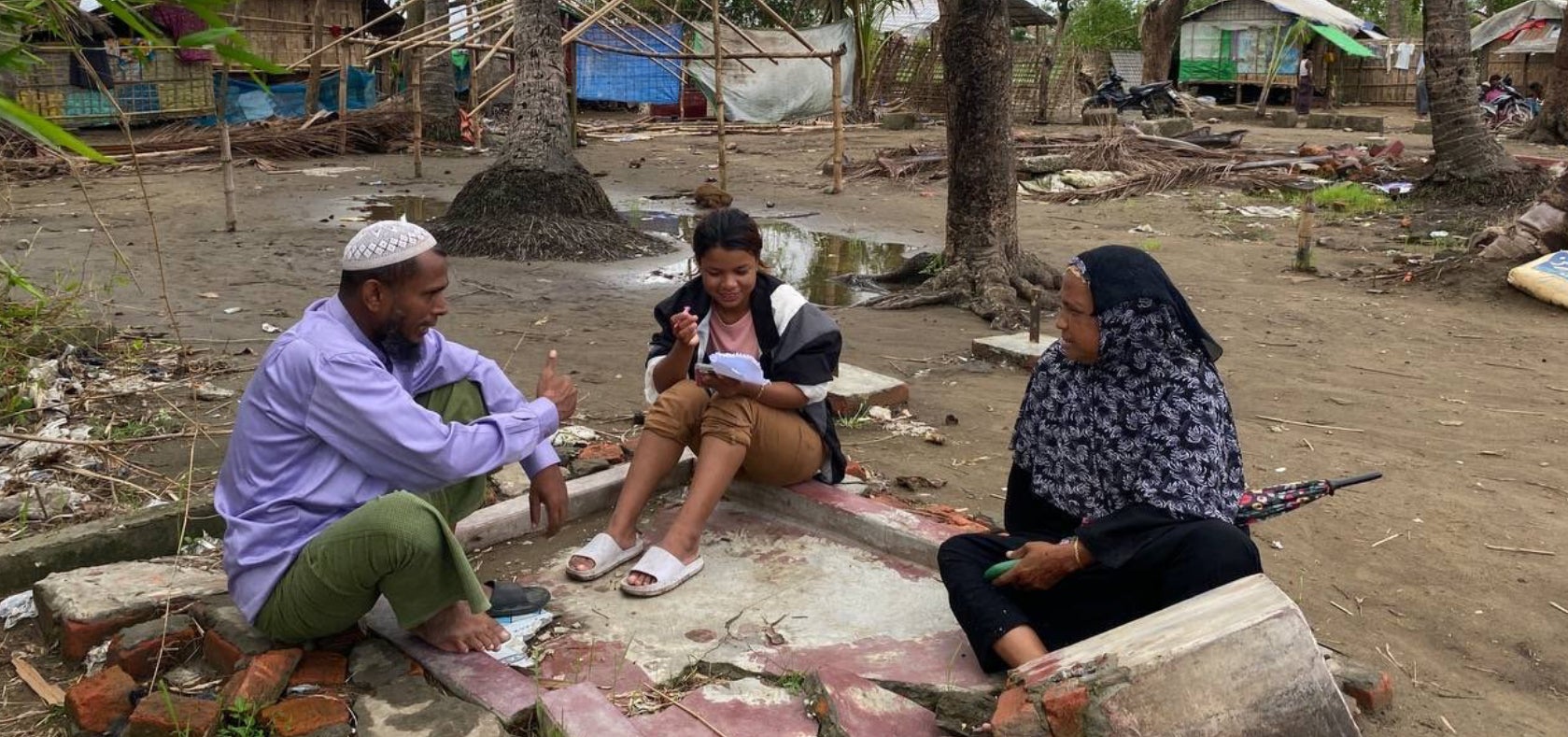One size doesn’t fit all: Why gender matters in humanitarian response
A UN Women guide with insights from Myanmar.
Date:

In May 2024, Myanmar marked the bleak milestone of more than 3 million civilians internally displaced,[1] with active fighting in more areas of the country than ever before.
Around one third of the population – 18.6 million people – are estimated to be in humanitarian need, of which 9.7 million are women and girls.[2] And seventy-five per cent of the population now live either under or perilously close to the poverty line.[3]
Amid these dire circumstances – and despite severe restrictions on access, dwindling funds, and dangerous operating environments – Myanmar women-led and women’s rights organizations continue to use their unique knowledge and networks to enable lifesaving support to remote, vulnerable and marginalized people.
The participation and leadership of women is critical to the humanitarian response in Myanmar – as it is in crisis-affected countries around the world. Here, using examples from Myanmar, we explain why it is so important to respond to gender-specific needs during and after crises, and to empower women to lead and participate in humanitarian action.
First, what is humanitarian action?
Humanitarian action refers to efforts to help communities that are in need due to armed conflict, natural disasters, or other crises. The aim is to save lives, alleviate suffering, and maintain human dignity during and after such crises.
Depending on the context and the needs of those affected, different humanitarian actors can be involved in the response including civil society organizations, community-based organizations, gender experts, crisis-affected communities, national and local authorities, international and national non-government organisations (NGOs), the Red Cross and Red Crescent Movement, the United Nations, and donors – each with different roles and mandates.

Why do we need to think about gender when responding to crises?
Crises and disasters impact people differently depending on their gender, and vulnerabilities are often exacerbated by other factors including age, disability, sexual orientation, ethnicity, or religion.
For example:
- social norms might make it difficult for women to seek safety during a disaster, such as if they are restricted from travelling alone or staying in shelters with non-related men;
- young men may be the most likely among the population to face forced recruitment into the military or armed groups; and
- girls may be taken out of school to reduce expenses and help with extra care work, or forced into early marriage in the hope that they will be provided for.
Understanding the gender-specific needs, capacities, and priorities of everyone affected by a disaster or crisis helps humanitarians design appropriate and effective responses, target those most in need, and avoid inadvertently reinforcing, perpetuating, or increasing inequalities.
In Myanmar
Since October last year, fighting in Myanmar’s Rakhine State has intensified. By conducting gendered needs assessments in the state, Myanmar women’s organisations have identified gender-specific impacts, including:
- a lack of access to essential services for responding, preventing, and documenting violence against women due to displacements, security risks, and damage to infrastructure; and
- increased gender-based crimes, including trafficking, early and forced marriages, sexual harassment and violence, exploitation and forced sex work, as women and girls bear the brunt of negative coping strategies during the crisis.
How do crises and disasters impact women and girls?
Gender inequalities already exist before a crisis happens. So when disasters hit, the impact of these inequalities are made even worse, leading women and girls to be disproportionately affected.
Women face increased risk of gender-based violence and insecurity; restricted mobility and access to communication; additional care, domestic and livelihood responsibilities; and barriers to essential services like healthcare and education.
In Myanmar
“Many women in internal displacement camps are trying to solve the food problems of the whole family and struggling to do more unpaid care work, which is not highly valued.
“Men occupy the management roles in the camp committees and make the decisions about response strategies, so the practical needs of women are not reflected or prioritized in the response activities.”
– A female staff member of a local women’s organisation explains some of the ways women are disproportionately impacted by the crisis in Myanmar.
Why is it important for women and women’s organizations to lead and participate in humanitarian action?
Despite the disproportionate impact of crises on women and their children, they are often excluded from decision-making processes in humanitarian action, disaster risk reduction and resilience efforts.
Yet, when women and women’s organizations are included in these processes, the responses are more likely to address the needs of all community members, ensure inclusivity and lead to more sustainable peace and recovery efforts because:
- their involvement ensures the specific needs and priorities of women and girls are understood and addressed;
- women play key roles in the household and in rebuilding communities and supporting family well-being; and
- their participation promotes gender transformative actions and challenges harmful norms and practices that perpetuate discrimination and violence.
In Myanmar
“We supported women in the village to lead and participate in the recovery and reconstruction activities after Cyclone Mocha, and to build their capacity including in management skills. Because of their leadership, the response activities were more efficient, and the specific protection needs and concerns of women and girls in the village were identified and responded to.”
– A female staff member of a Myanmar women’s organisation.

What policies or international frameworks guide gender-responsive humanitarian action?
The Inter Agency Standing Committee is the longest-standing and highest-level forum for coordinating humanitarian assistance. The IASC Policy on Gender Equality and the Empowerment of Women and Girls in Humanitarian Action, which was updated by UN Women in 2024, provides a framework that humanitarian actors should follow to integrate gender equality and the empowerment of women and girls into all preparedness and response activities.
Other relevant policies and international frameworks include:
- UN Security Council Resolution 1325 on Women, Peace, and Security recognizes the disproportionate impact of conflict on women and girls and calls for their participation in peace processes, protection from sexual and gender-based violence, and integration of gender perspectives in all peace and security efforts. Learn more in our Myanmar explainer on Resolution 1325.
- Convention on the Elimination of All Forms of Discrimination Against Women (CEDAW) sets a broad international standard for gender equality and women's rights, which informs gender-responsive policies in all areas, including humanitarian contexts.
- Sustainable Development Goals 5 (gender equality) and 10 (reduced inequalities) guide global efforts to address gender disparities and promote the rights and empowerment of women and girls in all sectors, including during crises.
Learn more about gender-responsive humanitarian action:
- Enrol in UN Women’s free Virtual Gender in Humanitarian Action training course.
- Read the IASC Gender Handbook for Humanitarian Action for practical guidance on mainstreaming gender equality and women’s empowerment throughout the humanitarian programme cycle. You can find additional resources on their IASC Gender in Humanitarian Action Reference Group website.
- If you have any questions or would like more information about UN Women Myanmar’s partnerships with women-led civil society organisations and our humanitarian work in Myanmar, contact us at: myanmar@unwomen.org.
________________________________
[1] Statement by the Resident and Humanitarian Coordinator a.i. for Myanmar, 3 May 2024. More than 3 million people forced to flee their homes in Myanmar. Available online.
[2] Myanmar Humanitarian Needs and Response Plan 2024, UN OCHA, December 2023. Available online.
[3] Poverty and the Household Economy of Myanmar: A Disappearing Middle Class, UNDP, April 2024. Available online.